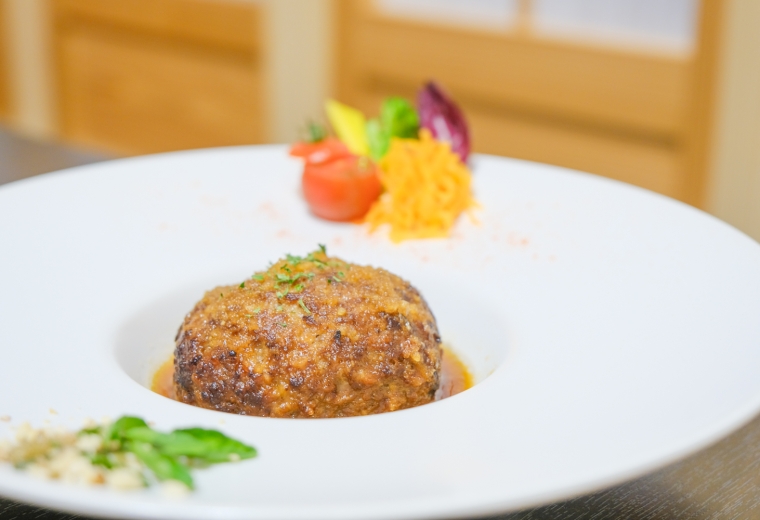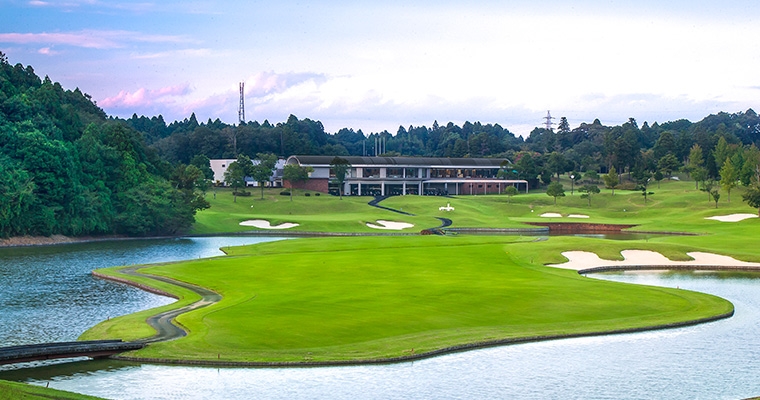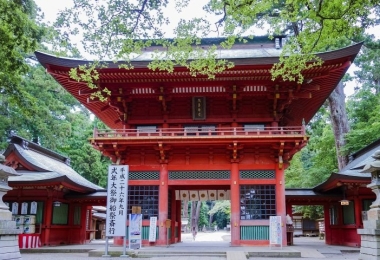Six Must-Try Fruits from Ibaraki, Japan’s “Food Kingdom”! Introducing the Best Farms for Fruit Picking
2024.09.25
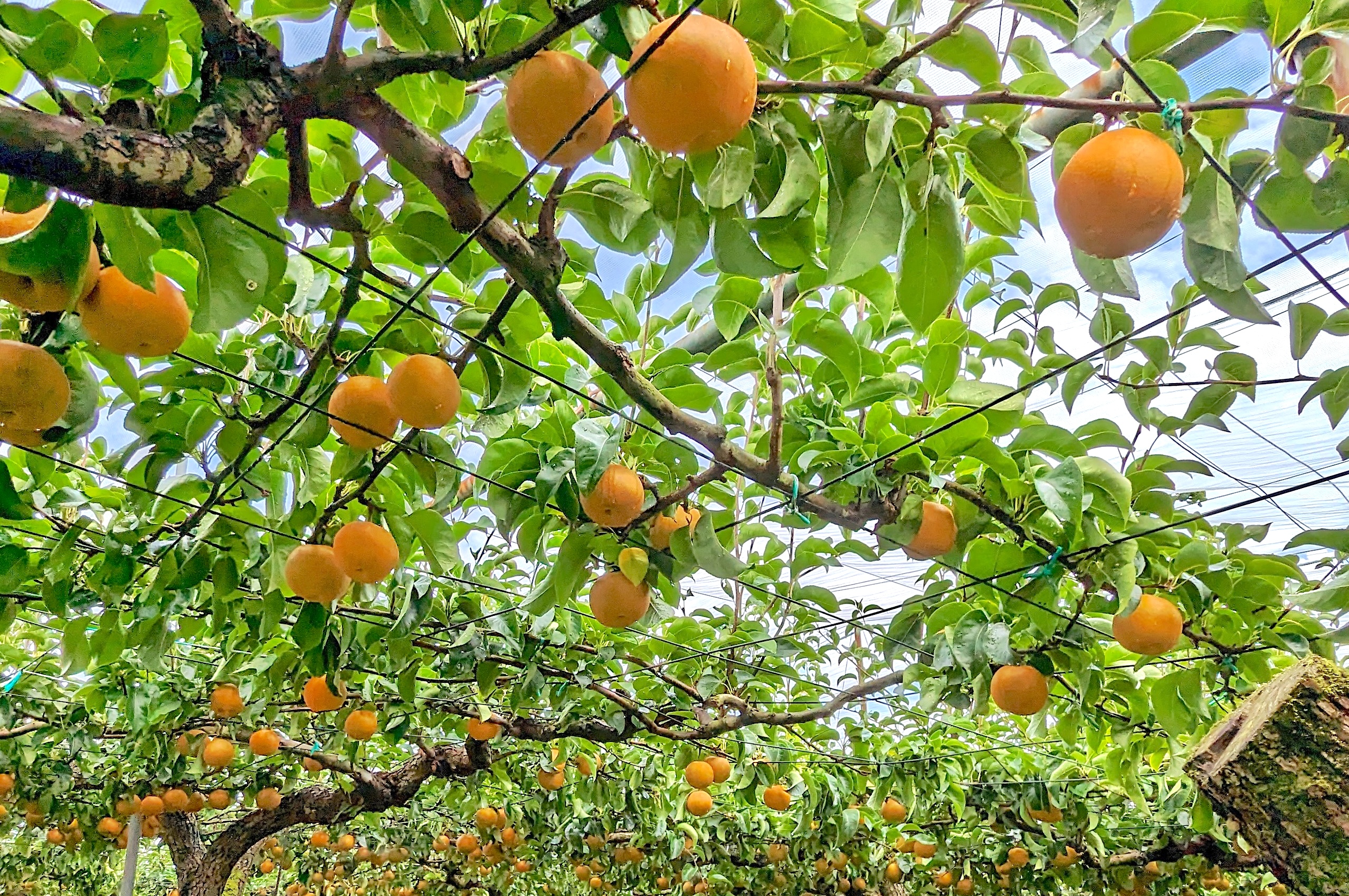
Ibaraki Prefecture, often called Japan’s “Food Kingdom,” is one of the nation’s top agricultural regions. Among its many delicious agricultural products, the fruit is particularly noteworthy. Ibaraki is home to various fruits produced year-round, including melons, which rank first in Japan, and pears, which rank second. In this article, we’ll introduce six of Ibaraki’s signature fruits and the best farms where you can enjoy fruit picking!
Picking Seasonal Fruits in Ibaraki Prefecture
Ibaraki produces a wide variety of fragrant, sweet fruits. Since the best time to enjoy each type and variety differs, you can savor their flavors all year round.
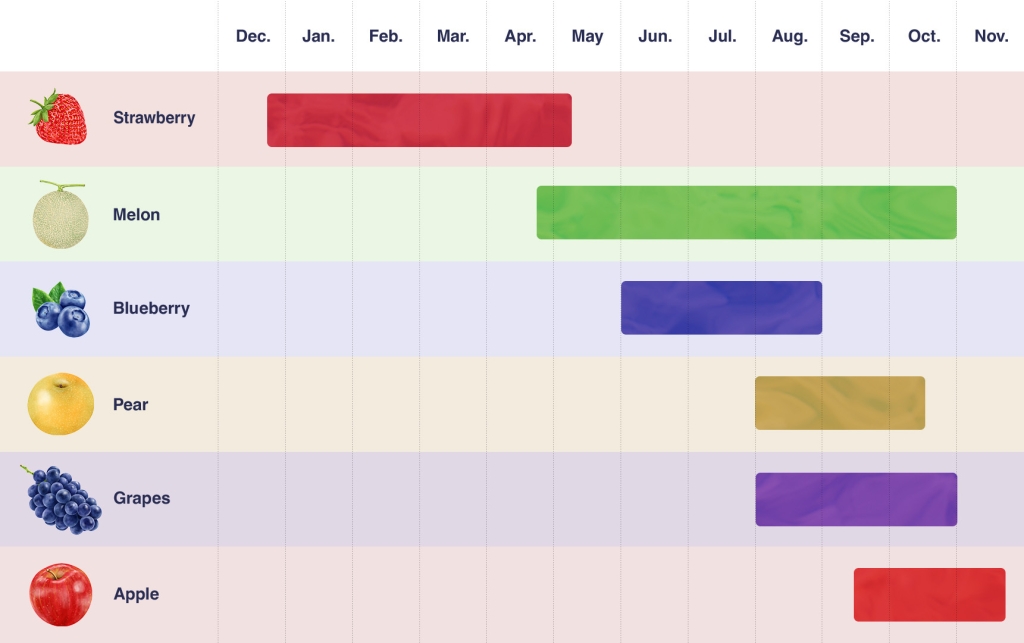
Visitors can pick these fruits at farms located across the prefecture. Fruit picking is a popular activity in Japan, with two different ways to enjoy it.
One way is to pay a fixed rate at the farm and enjoy an all-you-can-pick/eat system. The other is to pay for fruits that you picked by weight. You can eat these fruits at the farm or take them home. Some farms offer the chance to taste and compare different varieties of fruit. Additionally, there are facilities equipped with markets and sales corners, barbecue sites, or cafes.
Each farm has different rules, rates, and business hours, so be sure to check their websites in advance.
Gastronomy Kingdom Ibaraki: 6 Local Fruits You Can't Miss and Recommended Farms for Fruit Picking
This article introduces six major fruits produced in Ibaraki, along with their harvest seasons and farms where visitors can enjoy picking them.
1. Strawberry (Season: Late December to Early May)
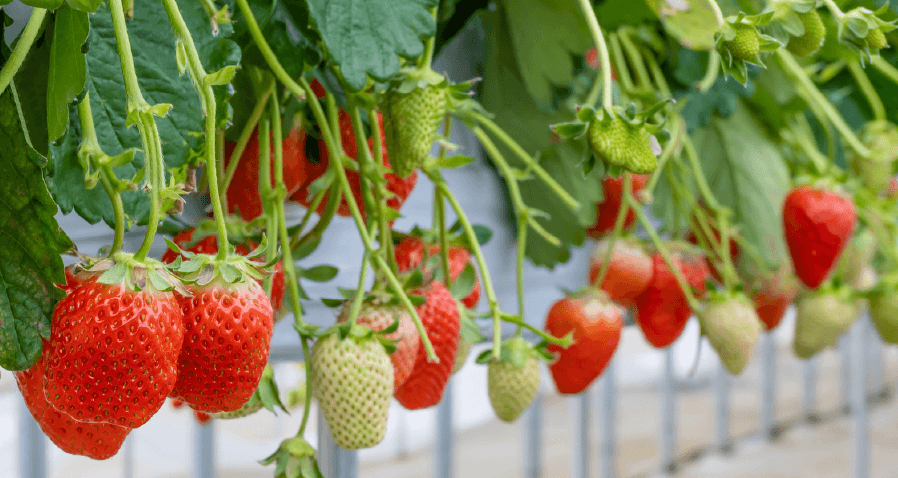
Picture courtesy of Granberry Daichi
Ibaraki Prefecture is a leading producer of strawberries in Japan, with a wide variety of strawberries cultivated throughout the region. Popular types include famous Japanese brands (such as Tochiotome and Beni Hoppe) and local brands (Hitachihime and Ibarakiss). It took eight long years to cultivate Ibarakiss, a large, elegantly shaped type with a not-so-tangy, sweet taste.
The season for strawberry picking is from December to May.
Farm Recommended for Strawberry Picking: Granberry Daichi
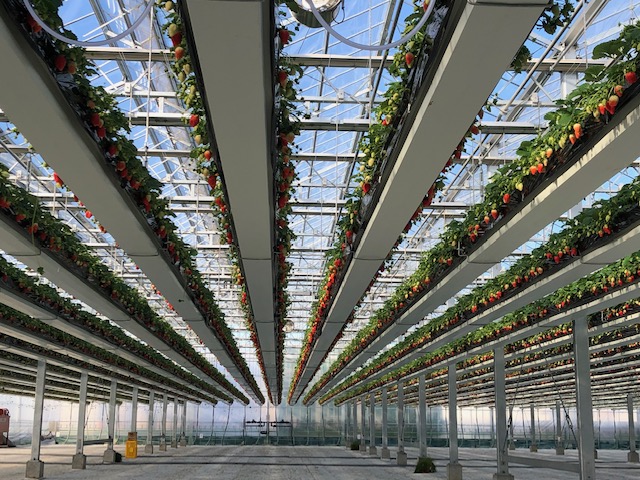
Picture courtesy of Granberry Daichi
Granberry Daichi has more than 50 years of history. It uses a rare hanging rack system for cultivation, where the berries can be elevated and can lowered mechanically for picking, eliminating the need for visitors to bend down. The aisles are wide enough to accommodate strollers and wheelchairs. This farm is the largest of its kind using the rack system, and it grows around 190,000 strawberry plants!

Picture courtesy of Granberry Daichi
Visitors can pick and eat various types for 40 minutes. A nighttime tour is available on Saturdays, which requires a reservation via the official website. The pricing varies depending on the season and visitor’s age.
Additionally, there is an on-site direct sales store and café where you can purchase a variety of sweets and desserts made with strawberries, such as cakes and puddings. These facilities are open during the off-season. In the fall, visitors can also experience sweet potato harvesting.
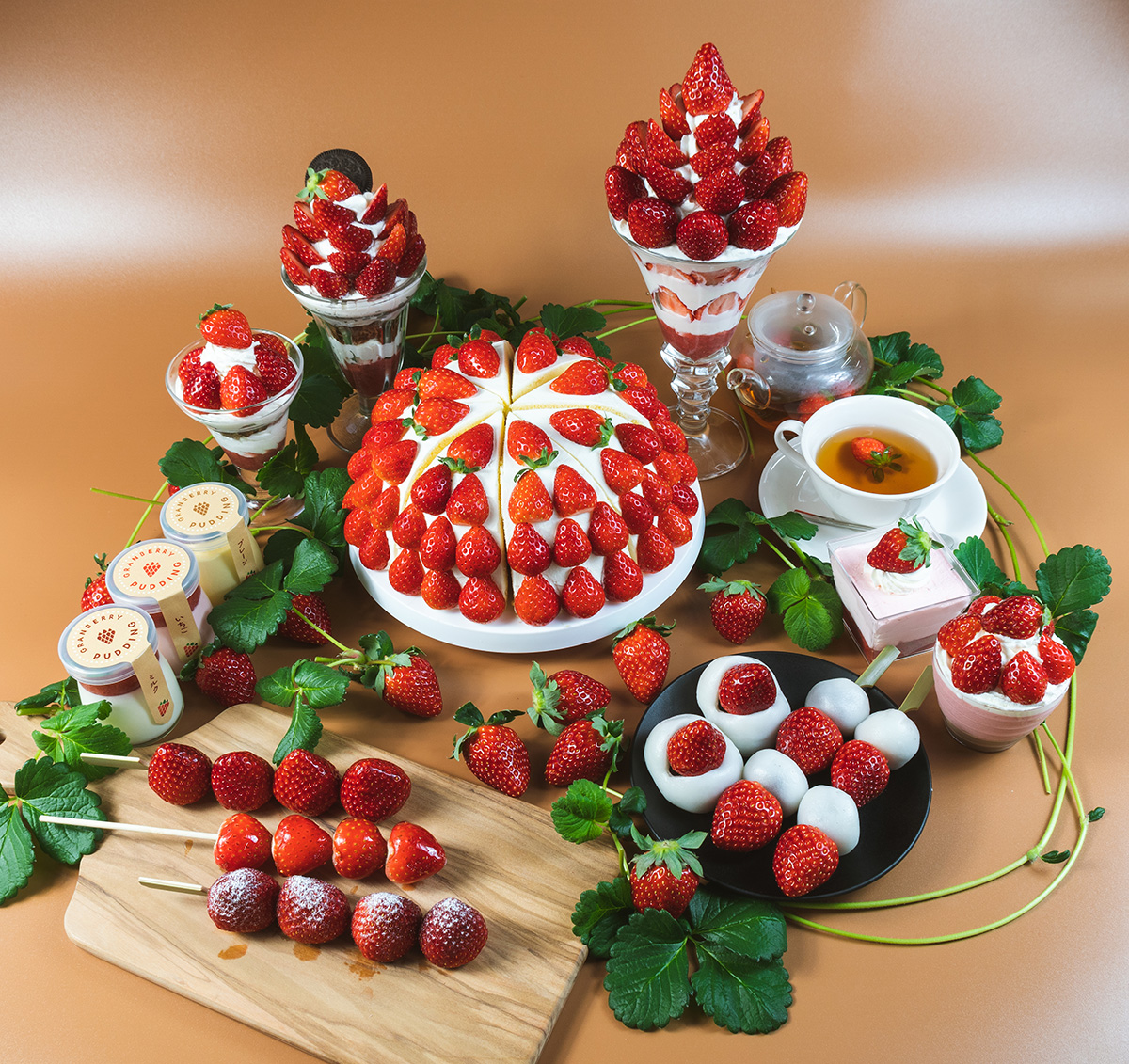
Picture courtesy of Granberry Daichi
Information
- Location
- Granberry Daichi
- Address
- Ibaraki, Joso, Misakashinden-machi 2383-2
Google Map: https://maps.app.goo.gl/4cZnPHVd9kivfgGB7 - Access
- By public transport: 10 minutes on foot from Mitsuma Station on the Joso Line
By car: 30 minute from Yawara IC on the Joban Expressway - Business Hours
- ・Strawberry Picking (mid-December to May):Reception: 9:30 - 14:20
Nighttime Picking: Saturday at 19:00, reception ends at 18:45
・Cafe and Shop (business hours differ by season)
Weekdays: 10:00 - 16:30 (L.O. 16:00)
Holidays: 10:00 - 17:00 (L.O. 16:30)
・Nagashi Somen Restaurant
10:30 - 15:30 (L.O. 15:00)
・Closed: Monday (if Monday is a public holiday, the following day will be closed). - Contact
- 0297-34-1514
- Website
- https://granberry-joso.jp/
2. Melon (Season: Late April to Late October)
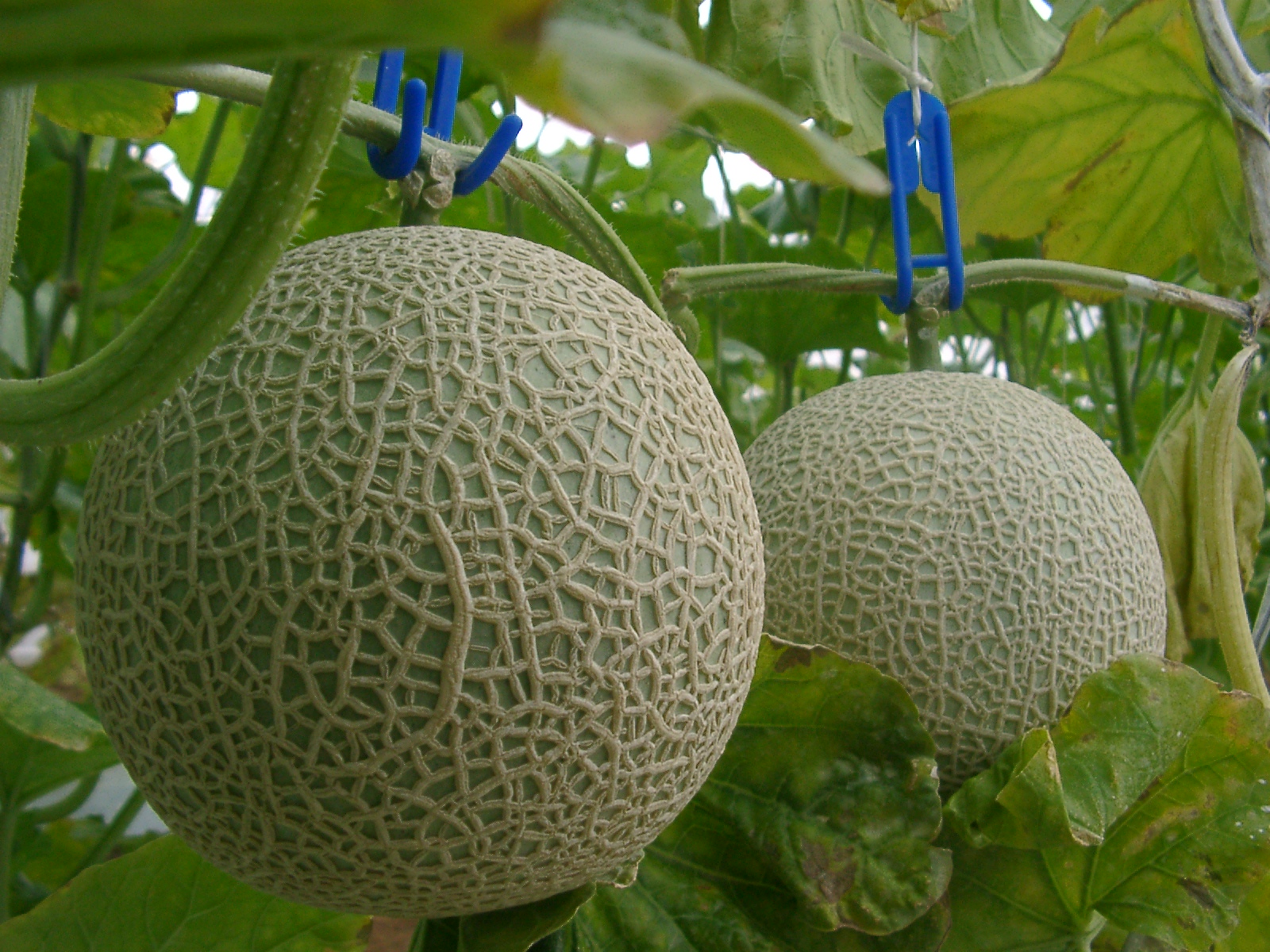
Picture courtesy of Forest Park Melon no Mori
The sweet and juicy melon is a symbol of Ibaraki. The prefecture, which has been the top producer of muskmelons for the last 25 years, is known as the Melon Kingdom.
In Ibaraki Prefecture, about 10 varieties of melons are produced, including those with green and orange flesh. While the season varies from April to October, according to the type, the best time to taste them would be in early summer and early autumn. Among them, the representative varieties are Ibaraking and Queenthy.
It took ten years to cultivate Ibaraking, an original muskmelon brand, using techniques developed by the prefecture and testing over 400 combinations. It has a thick texture, sweet and refreshing pulp, and a rich, succulent taste. The best time to enjoy it is from May to June.
Those who prefer orange-colored flesh should try Queenthy, a major Japanese brand. It is rich and sweet, containing a large amount of carotin. The best time would be from May to early July.
Farm Recommended for Melon Picking: Forest Park Melon no Mori
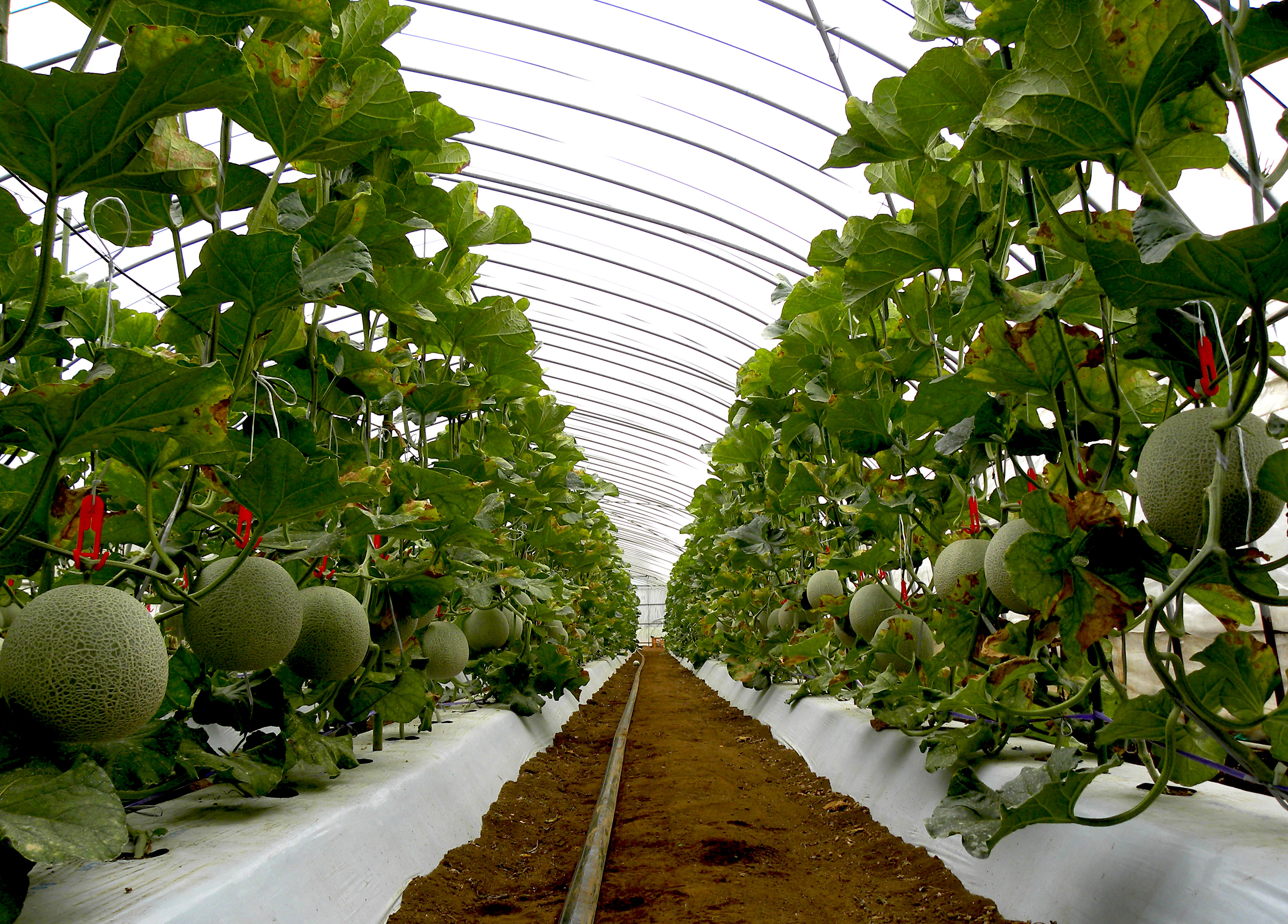
Picture courtesy of Forest Park Melon no Mori
Forest Park Melon no Mori is located in Hokota City, the top Japanese municipality producing melons. The farm cultivates various types and welcomes many tourists in spring, early summer, and autumn. In addition to tasting melons, visitors can also pick melons themselves and take them home.They can also try the barbecue course and taste Hitachi beef, an Ibaraki brand. Please note that a reservation might be required depending on the course or the number of people. Moreover, they can enjoy one of the various barbecue courses featuring Hitachi beef, an Ibaraki specialty. Please note that reservations might be required depending on the course and the number of people.
There is also a shop that sells melons and offers fresh juice, as well as melons topped with ice cream.

Information
- Location
- Forest Park Melon no Mori
- Address
- Ibaraki, Hokota, Anbo 1623-1
Google Map: https://maps.app.goo.gl/ezpW93AFSoFXF6HH6 - Access
- By public transport: 5 minutes by the shuttle servise (reservation is required) from Shin-Hokota Station
By car: 50 minutes from Chiyoda-Ishioka IC on the Joban Expressway - Business Hours
- ・Melon Picking (May to July, September to October)
Reception: 9:30 -17:00
・Sales Corner and Barbecue
9:00 - 18:00
・Closed: the facility has irregular hours and is completely closed to the public during the off-season. - Contact
- 0291-33-5621 (reception ends at 22:00)
info@melonnomori.com - Website
- https://www.melonnomori.com/
3. Blueberry (Season: June to August)
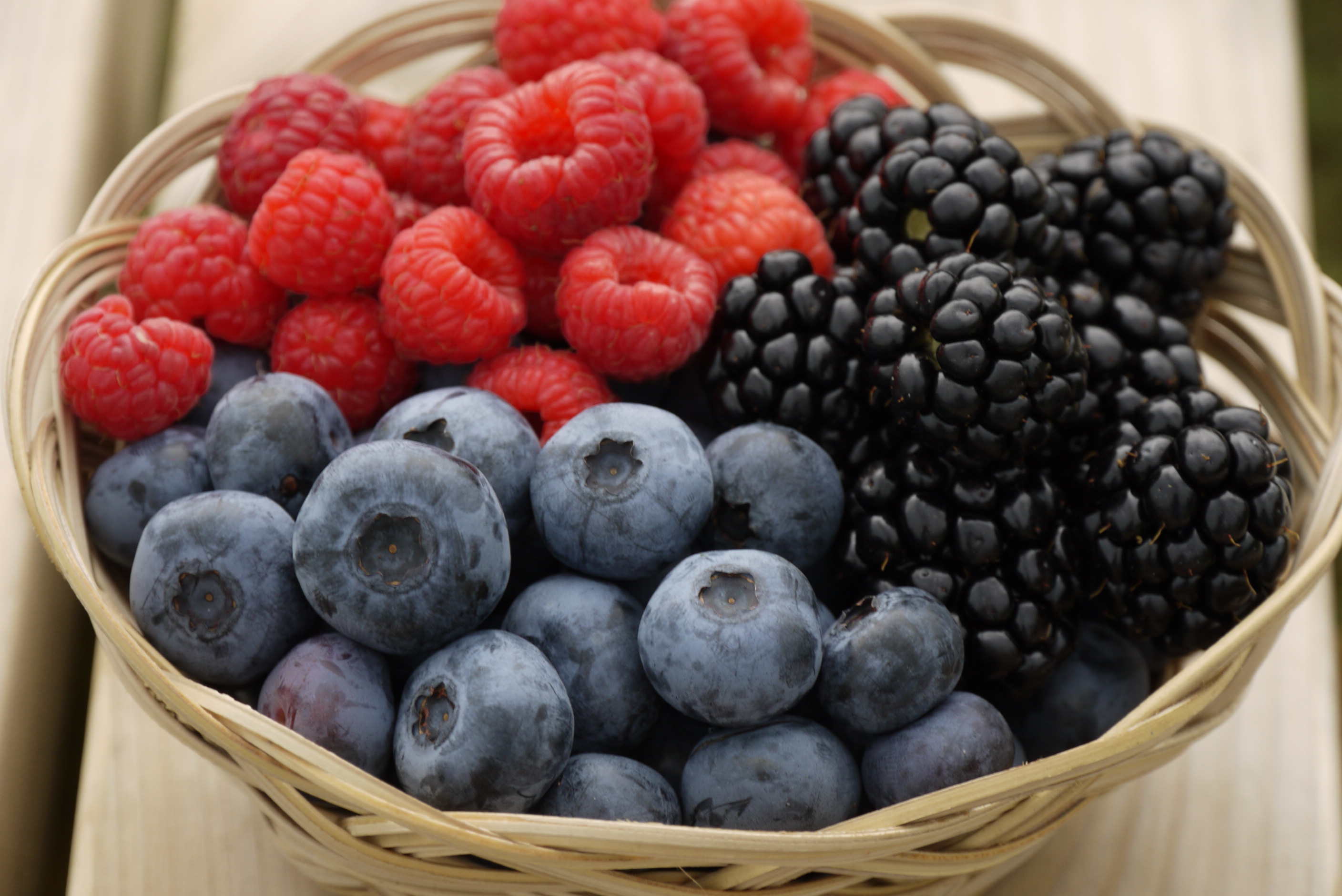
Picture courtesy of Van Sickel Farm Tsukuba
Ibaraki is Japan’s third-largest producer of blueberries, mostly grown in Tsukuba, Kasumigaura, and Komitama. The prefecture boasts a wide variety of types, flavors, and sizes. The season is from June to August, and the sweet, tangy fruit will make everyone forget the heat.
Farm Recommended for Blueberry Picking: Van Sickel Farm Tsukuba
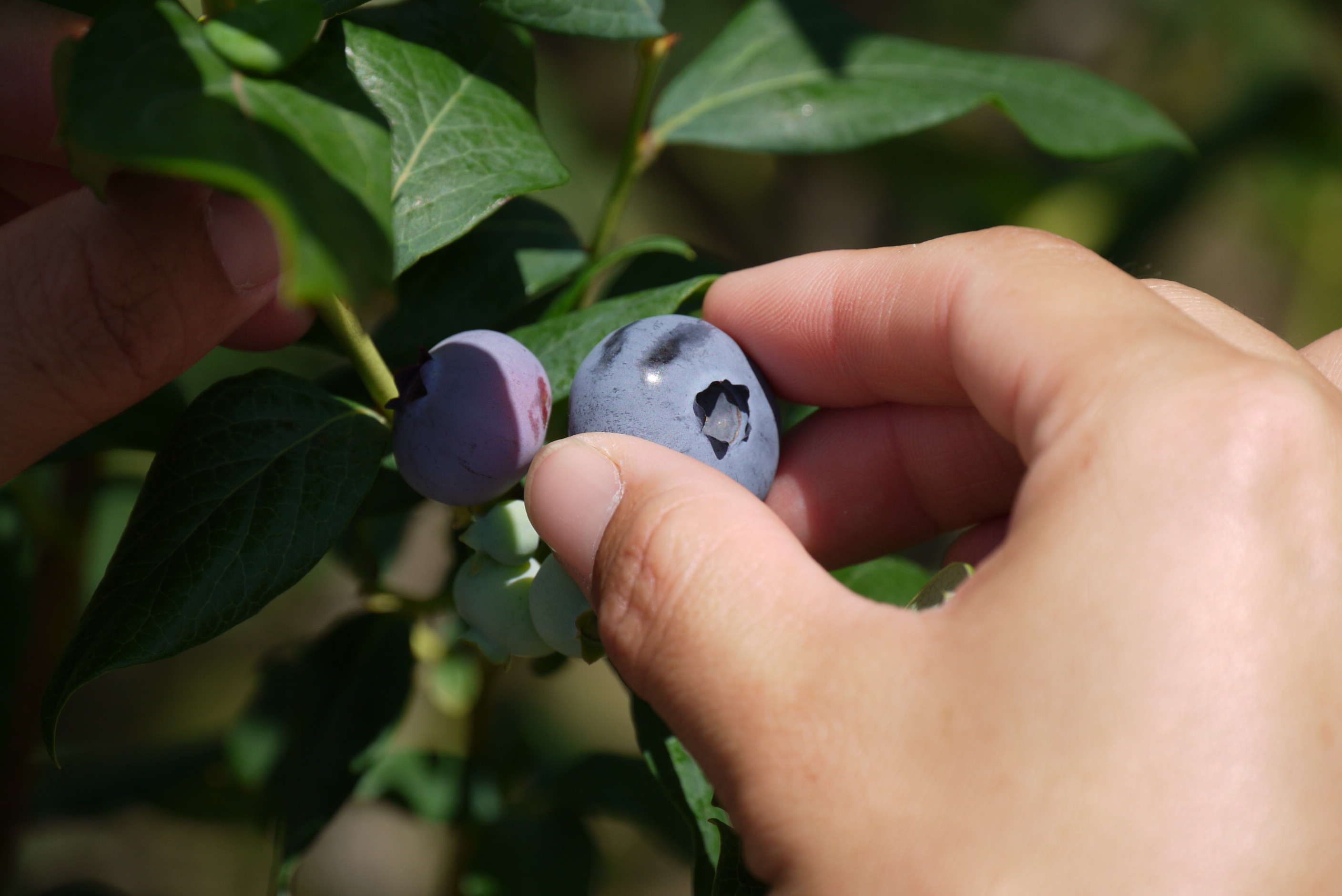
Picture courtesy of Van Sickel Farm Tsukuba
Van Sickel Farm is located in Tsukuba, one of Japan’s top three blueberry-producing regions. This farm is dedicated to “mineral cultivation,” which emphasizes reducing the use of pesticides and chemical fertilizers. The farm grows about 50 varieties on 1,000 trees. Each variety has its unique flavor; some ripen in June, while others start to ripen around mid-July.
Visitors can enjoy not only blueberries but raspberry picking, an all-you-can-eat, unlimited-time event, in July and August. The farm is run by a family, and the owner, who is from Iowa, USA, can provide support in English.
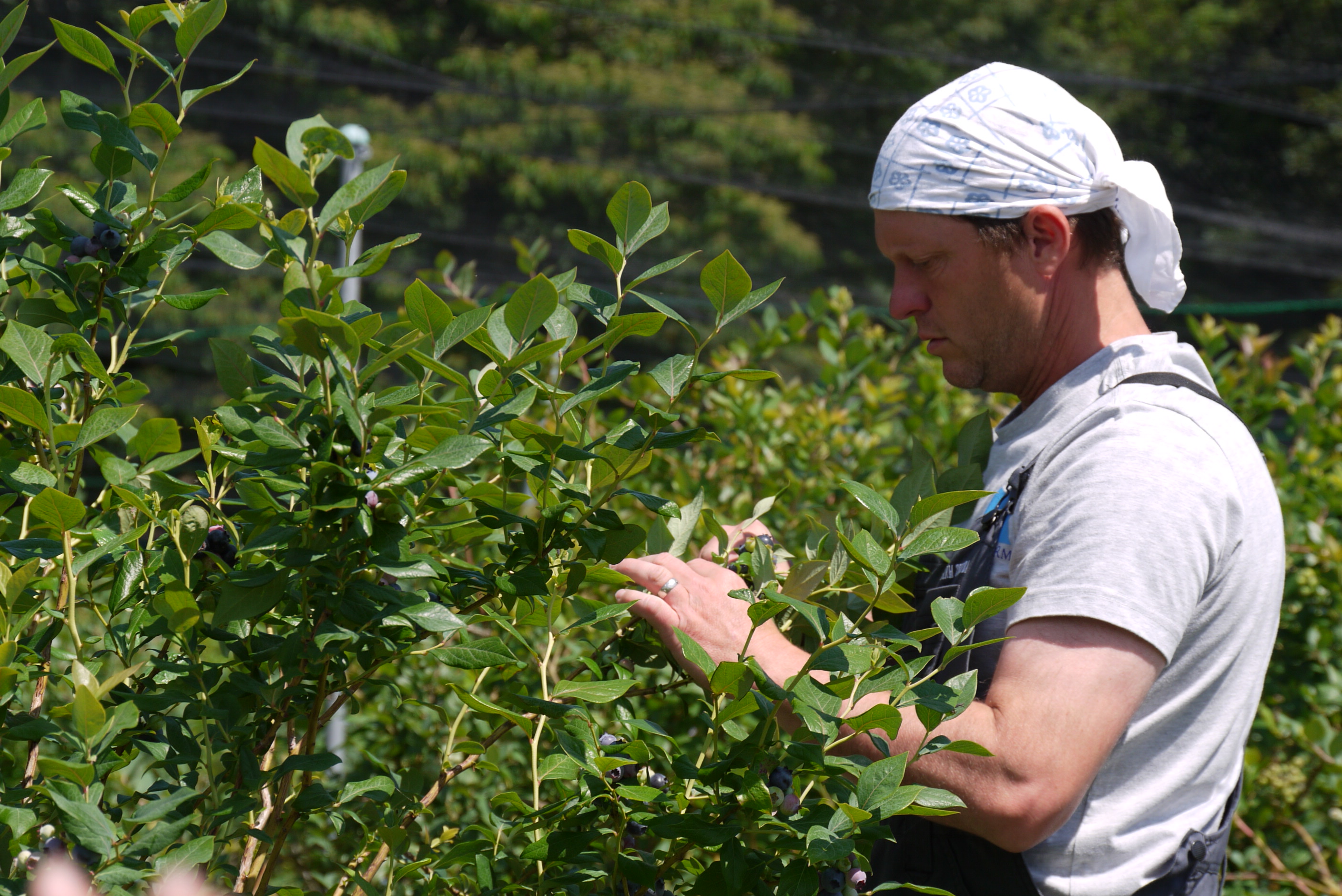
Picture courtesy of Van Sickel Farm Tsukuba
During picking, visitors can enjoy the beautiful views of Mount Tsukuba and Mount Hokyo, and take a break at the log cabin or on the cozy, handmade wooden benches.
While reservations are not required on weekdays, they are necessary via the farm’s website on weekends and national holidays. The rate varies according to the visitor’s age.
Picked blueberries can be packed and taken home. The farm also sells homemade jam, ice cream, and frozen berries.
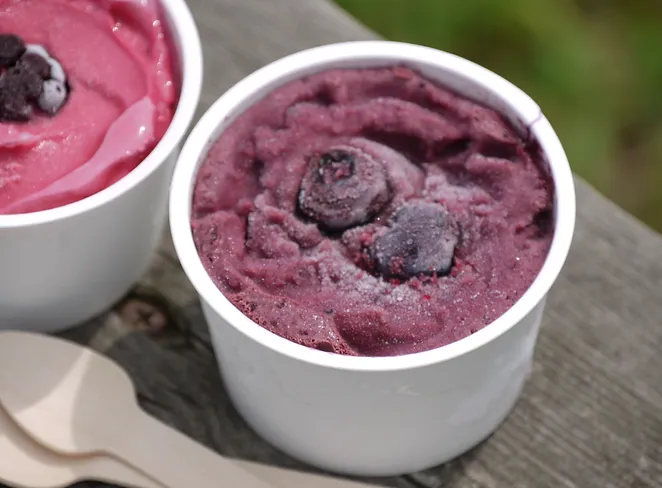
Picture courtesy of Van Sickel Farm Tsukuba
Information
- Location
- Van Sickel Farm Tsukuba
- Address
- Ibaraki, Tsukuba, Ozone Aza Kashima 2549-1
Google Map: https://maps.app.goo.gl/vFVkpsq9oQaDWNhx6 - Access
- By public transport: 25 minutes by bus from TX Tsukuba Station, alight at "Ichinoya Gakusei Shukusha-mae" (Ichinoya Student Dormitory Front) and walk for 20 minutes
By car: 20 minutes from Tsuhiura-Kita IC on the Joban Expressway - Business Hours
- ・Berry Picking (early June to late July)
Reception: 9:00 - 15:00 on Mondays, Fridays, Saturdays, and Sundays
・Sales Corner (business hours differ by season)
9:00 - 16:00 on Tuesdays and Thursdays
・Closed: the facility has irregular hours. - Contact
- 080-3707-2007 (reception hours 10:00 - 16:00)
- Website
- https://www.vfarmtsukuba.com/
4. Pears (Season: Early August to Mid-October)
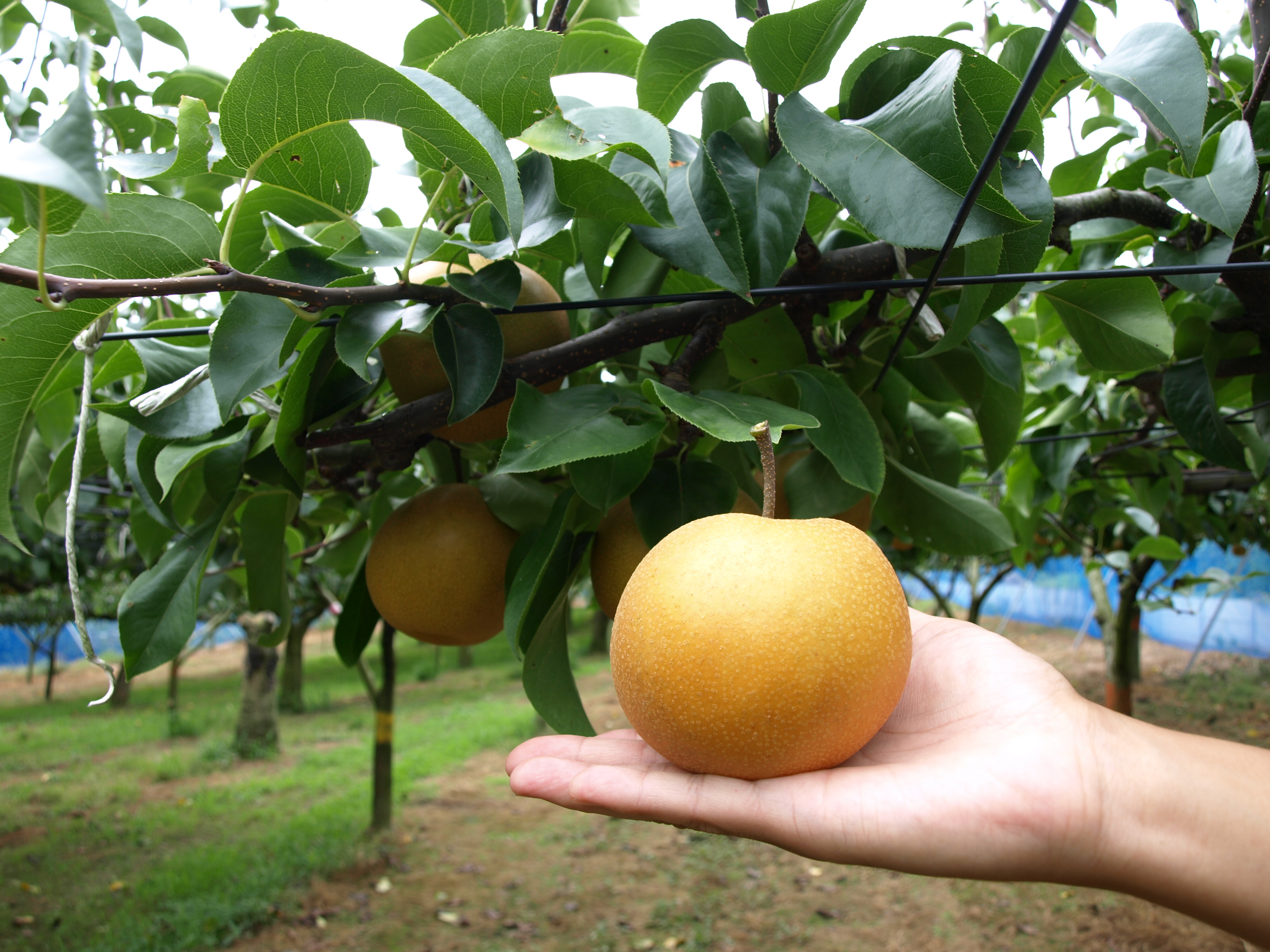
Picture courtesy of Fukuda Green Farm
Ibaraki is the second-largest producer of pears in Japan. The pears are primarily grown in Kasumigaura and Ishioka. The abundant water supply, rich soil, and significant difference in temperature during the day make it particularly suitable for pear cultivation. Ibaraki is one of the oldest production areas of pears in Japan, with its history going back to the Edo Period (1603 to 1868).
Ibaraki produces seven types of pears, including Kosui, which marks the beginning of the pear season around mid-August; Keisui, an Ibaraki original; and Niitaka, which can weigh over 1 kilogram each. The season ends around mid-October.
Farm Recommended for Pear Picking: Fukuda Green Farm
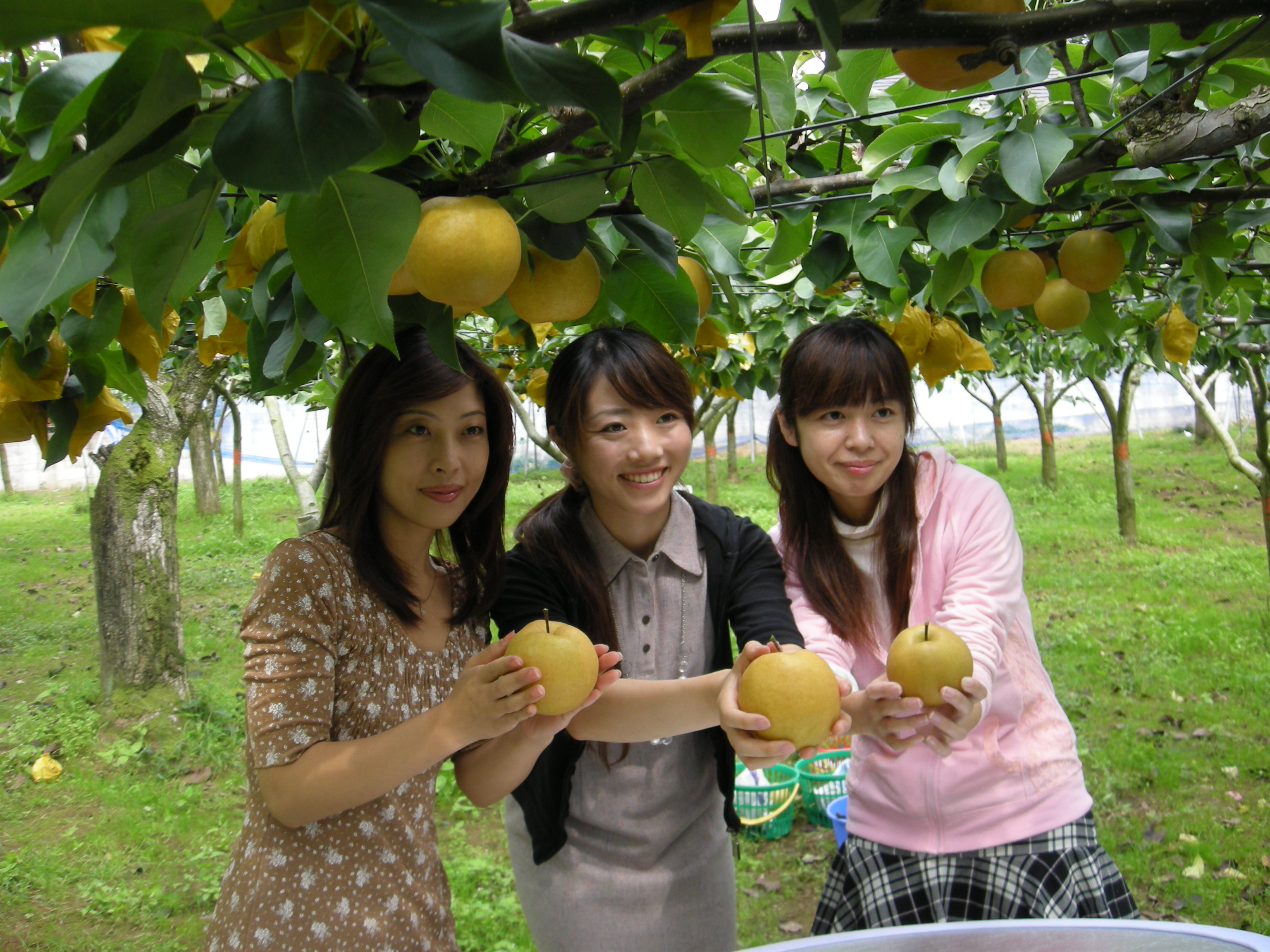
Picture courtesy of Fukuda Green Farm
Fukuda Green Farm aims to reduce agricultural chemicals and employs organic fertilizers. The facility is designed in a wheelchair-friendly style.
The farm grows Kosui, Tosui, and Niitaka pears. Visitors can pick not only pears but also grapes, chestnuts, and persimmons. An all-you-can-eat pear picking is available for one hour, and any picked fruit can also be taken home for an additional fee based on weight. Prices vary depending on the harvest season and the visitor’s age. Additionally, seasonal fruits are available for purchase at the sales corner.
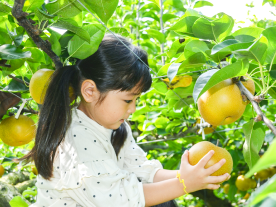
Picture courtesy of Fukuda Green Farm
Information
- Location
- Fukuda Green Farm
- Address
- Ibaraki, Kasumigaura,Shimosaya 777
Google Map: https://maps.app.goo.gl/e9Dm76yPDpiWw1SC6 - Access
- By public transport: 30 minutes by bus from Tsuchiura Station
By car: 10 minutes from Chiyoda-Ishioka IC on the Joban Expressway - Business Hours
- ・Fruit Picking (mid-August to mid-October)
Reception on weekdays: 10:00 -15:00
Reception on holidays: 9:00 - 15:00
・Sales Corner
Weekdays: 10:00 - 16:00
Holidays: 9:00 - 16:00
・Closed: the facility has irregular hours and is completely closed to the public during the off-season. - Contact
- 0299-59-3251
- Website
- http://fukuda-green.jp/service/#unit-200"
5. Grape (Season: August to October)
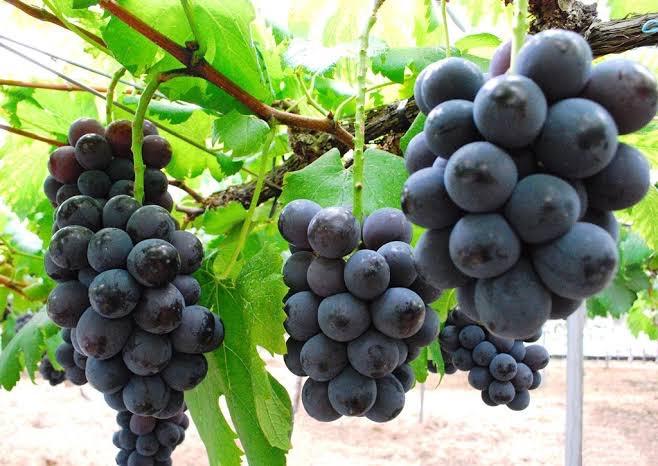
Picture courtesy of Yaguchi Orchard
Kyoho, known as the “king of grapes,” is an original Japanese brand cultivated all over Ibaraki. Striking a fine balance between a rich, sweet taste, and tanginess, it has gained popularity. In total, about ten varieties of grapes are grown in Ibaraki, including the local Hitachi Seiryu from Hitachiota and European varieties like the high-end Shine Muscat. The primary production areas are Ishioka and Kasumigaura in southern Ibaraki, and Hitachiota in the north. While the best time to taste the grapes depends on the variety, the general season runs from early August to late October.
Farm Recommended for Grape Picking: Yaguchi Orchard

Picture courtesy of Yaguchi Orchard
Yaguchi Orchard has a sixty-year history and is now managed by a third-generation owner. Visitors can pick Kyoho in a one-hour, all-you-can-eat system. They can also purchase the picked fruits by weight.
While grape picking can be enjoyed without a reservation, it is recommended to book in advance due to potential crowds. The latest entry time is 15:00. In addition to grapes, visitors can also enjoy picking pears and persimmons, as well as chestnuts, depending on the season.
A popular product sold at Yaguchi Orchard is Kyoho no Shizuku (Kyoho Drops). This is a fresh, a concentrated juice made from 100% ripe Kyoho grapes. The product is sugar-free and can be enjoyed straight or mixed with soda or alcohol.
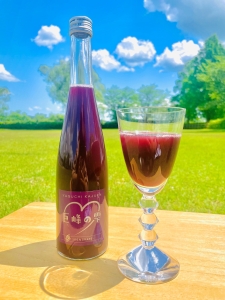
Picture courtesy of Yaguchi Orchard
Information
- Location
- Yaguchi Orchard
- Address
- Ibaraki, Kasumigaura, Shimotsuchida 477
Google Map: https://maps.app.goo.gl/671kTfKSkkrBGchg9 - Access
- By public transport: 10 minutes by bus from JR Ishioka Station, alight at "Shimotsuchida" and walk for 2 minutes
By car: 50 minutes from Chiyoda-Ishioka IC on the Joban Expressway - Business Hours
- ・Fruit Picking (early August to early October)
Reception: 9:00 - 15:00
・Sales Corner
Weekdays: 10:00 - 16:00
Holidays: 9:00 - 16:00
・Closed: Thursdays during the season, completely closed to the public during the off-season. - Contact
- 0299-59-2323
- Website
- https://www.yaguchikajuen.com/"
6. Apple (Season: Mid-September to Late November)
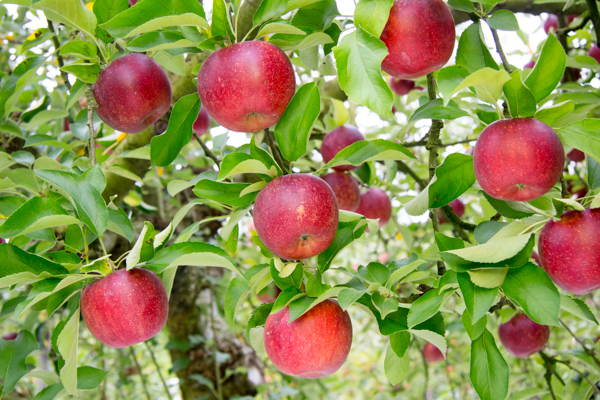
Picture courtesy of Fujita Apple Orchard
In Ibaraki Prefecture, apples are grown in Hitachi City, Ushiku City, and Mito City, but the most renowned production area is Daigo Town in the northern part of the prefecture. A distinctive feature of Daigo apples is that they are harvested only after they have fully ripened on the tree. These “tree-ripened apples” are considered valuable and are not distributed through regular channels, which has made apple picking in Daigo a highly popular event.
In Daigo, there are about 15 varieties of apples, including the delicious Fuji with its honey-like fragrance, the rare Kōtoku, and the local original variety Okukuji Hōbeni.
Farm Recommended for Apple Picking: Fujita Apple Orchard
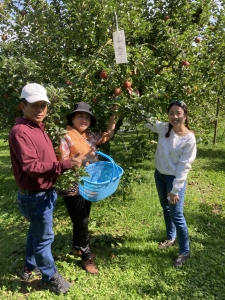
Picture courtesy of Fujita Apple Orchard
Fujita Apple Orchard is one of the leading orchards in the land of apples, Daigo. Opened over 60 years ago, this orchard offers a picking experience for nine varieties of apples, such as Tsugaru, Orin, Fuji, and others. Visitors can purchase the apples they picked by weight and enjoy all-you-can-eat tastings of apples provided by the staff.
Additionally, Fujita Apple Orchard is dedicated to its processed products. There is a shop on the premises that offers not only direct sales of apples but also apple pies, apple juice, lagger beer and cider, and other products. The apple pies can also be enjoyed fresh and hot on-site.
There is also a barbecue site surrounded by trees, serving Ibaraki meat brands—Hitachi beef and Hitachi no Kagayaki pork—accompanied by homemade apple sauce. Please note that a reservation is required for the barbecue.
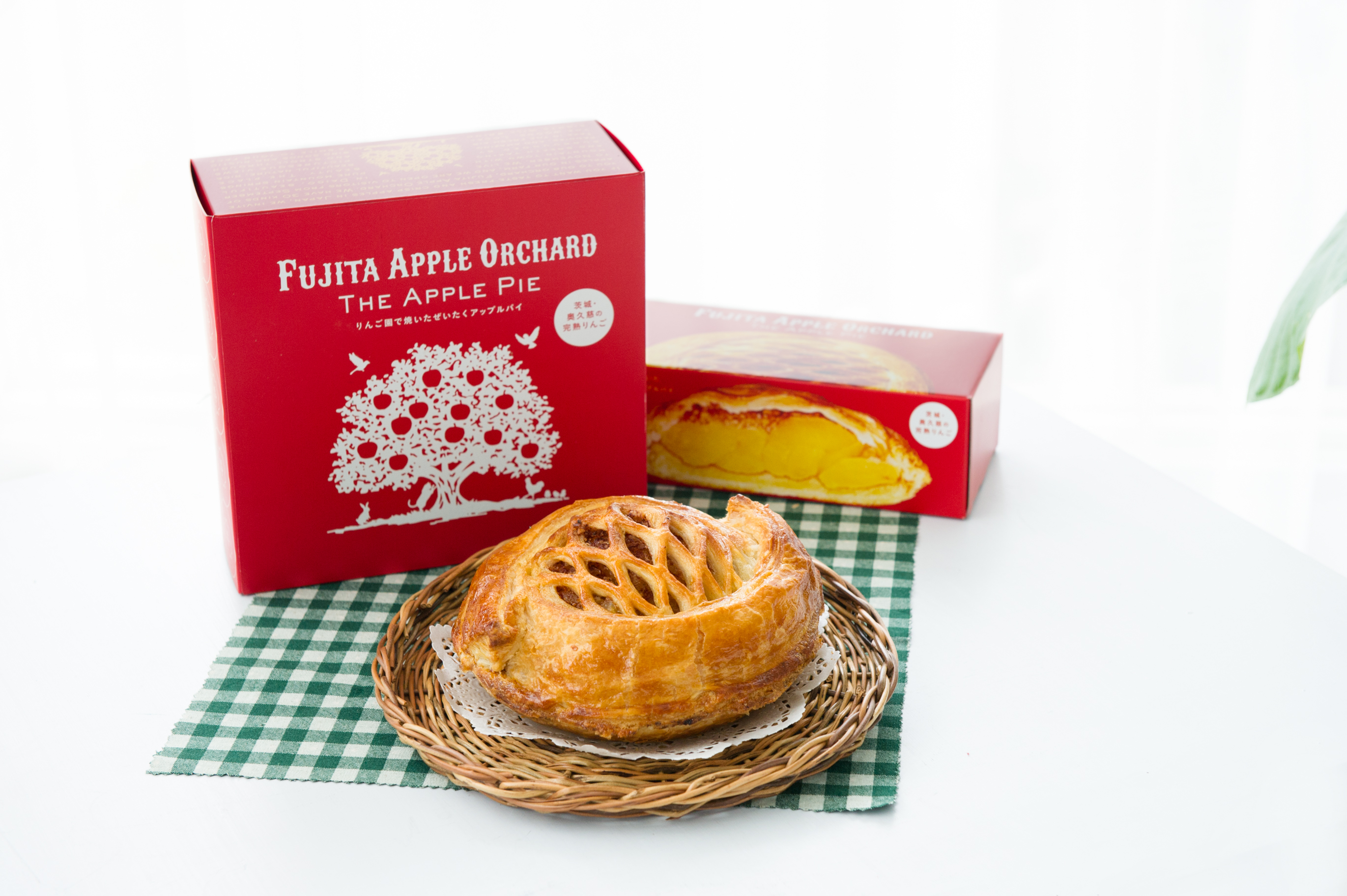
Picture courtesy of Fujita Apple Orchard
Information
- Location
- Fujita Apple Orchard
- Address
- Ibaraki, Kuji, Daigo-machi, Asakawa 400
Google Map: https://maps.app.goo.gl/ZcfHVgyTFtpBo3FL6 - Access
- By public transport: 10 minutes by taxi from JR Hitachi-Daigo Station
By car: 60 minutes from Naka IC on the Joban Expressway - Business Hours
- ・Fruit Picking (October to November)
Reception: 9:30 - 16:00
・Shop and Barbecue:
9:00 - 18:00
・Closed: open every day during the season, completely closed to the public during the off-season - Contact
- 0295-72-5028
- Website
- https://applefujita-llc.com/
Enjoy fruit-picking experience in Ibaraki!
In addition to the fruits featured in this article, Ibaraki also offers persimmons, tangerines, peaches, and more! With its convenient access from Tokyo, Ibaraki provides seasonal fruits to enjoy all year round.
Be sure to check each farm’s website for details on pricing, reservations, and seasonal availability before heading out, and enjoy your fruit-picking experience!
